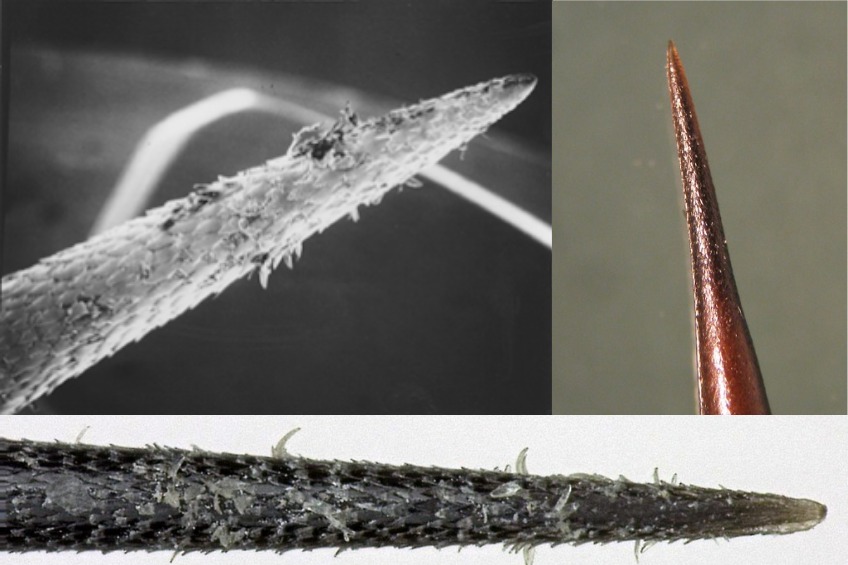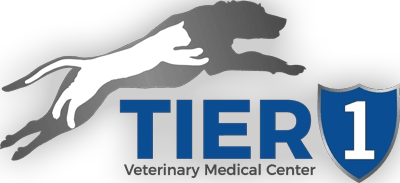Porcupines seem to be particularly plentiful this year and are coming into frequent contact with people, pups, tires, and even cats in surprising numbers. Alaskans have to be watchful for moose in our yards, when out for a walk in the woods and especially in the backcountry with your guardians and hunting buddies. However, maybe you should scan a little closer to the ground as well — be on the lookout for these little prickle pigs. They aren’t just a nuisance causing a little pain in the snout or feet for your critters; porcupine quills can be lethal. Especially right now, fall is porcupine mating season and they are out, about, and active.
A few months ago I encountered a dog that had been struck by a porcupine several years prior and was in for a quill removal. These quills weren’t coming out of the face or feet. They were removed from the heart and lungs to save his life. I have encountered other dogs struck in the face who years later have quills removed from their abdomen. How is this possible? Porcupine quills can migrate from where they puncture your animal’s flesh to other parts of the body, making the swift removal of quills imperative.
If your animal is unlucky enough to tangle with a porcupine:
- Get them to the vet as fast as possible so the quills can be removed before they begin to migrate.
- Do everything you can to prevent your dog from pawing at the quills. This can break them off and even push them further in, making them harder to find and remove.
- Elizabethan collars (E-collar, cone of shame, lampshade collars) are very helpful here.
- Do not use a muzzle unless you are sure there are no quills in the face or mouth.
- Get some help in restraining them.
- Even the best dogs will struggle when the quills are being pulled; it hurts.
- DO NOT CUT the quills

Take a closer look at these close-up photos of quills. The quills are sharp and penetrate skin easily, sticking because of the backwards facing barbs and scales on the quill. Any movement of the tissue around the quill can it move farther in. Tissue slides easily along the quill with the grain of the scales and barbs but cannot slide back; this is how they migrate. Hence the rush for getting help.
Porcupine Quill Removal by a Vet
Your vet is going to recommend sedation. The quills bury deep and can be difficult and painful to remove. It will also require extensive exploration of the face, feet, or anywhere the quills may stick. The associated bill can be a little difficult to stomach but it’s minimal compared to surgical removal later. There are a lot of recommendations out there on how to remove quills in DIY fashion, and these desperately need to be addressed. Many of these myths are deeply wrong, dangerous, and can result in infections, migrating quills, severe illness, and possibly death if not addressed properly.
Debunking porcupine quill removal myths:
- The danger of quills is not that they expand in the tissue and cutting them off will not help. They don’t deflate and cutting them can make it more likely that the quills will break or splinter, and it makes them harder to grip for removal
- Twisting them doesn’t help; it won’t break off the barbs or scales. It will likely just help them get a better grip on the tissue.
- Softening the quills with liquid first will not help with removal. It will make them more likely to break, especially near the tip.
Removing Porcupine Quills Yourself (not recommended!)
If you are so unlucky as to be in a situation where you cannot get to a veterinarian within 24 hours, out hunting, camping, or living in the bush, here are some tricks you can try to implement for removing them yourself. This is risky, very painful for your pet, and not recommended unless you have no alternative.
- Use pliers, not your fingers to ensure a solid grip.
- The barbs can be painful when you grasp the quill and if your dog moves you can get stuck on the other end.
- Get some help restraining your dog
- Do your best to keep them calm.
- Grab the quill firmly near the tip and pull straight out, quickly and steadily.
- This will minimize the risk of breaking off the tip.
- Removing quills hurts, so rip off the bandaid.
- Do not pull out at an angle. Pull it out straight the way it went in.
- Do not twist. Just pull steadily straight out.
- Check each quill after you remove to make sure you got the entire thing.
- Mark each spot you pulled a quill from.
- Permanent marker is great for this.
- This is so it can be thoroughly inspected later.
- Check their feet and legs thoroughly.
- Dogs especially will commonly paw and bite or jump in with both feet, and they may be stuck between the toes, in the pad itself, and even in the back legs.
- Take them to a vet as soon as possible to have them thoroughly checked.
- It is much easier to find the quills when they are close to the skin and can be cut out.
- Digging them out of muscle or body cavities is significantly harder, riskier to your pet, and advanced imaging may be required to find them which gets expensive quickly and progressively more dangerous for your pet.
Quills sticking out are icebergs. They cause all kinds of problems under the surface, finding their way into eyes, joints, body cavities, and even organs, not to mention a risk for infection. Don’t delay bringing your pet to the vet after a porcupine encounter, and if you can at all help it, don’t try to remove them yourself. It’s difficult to find and remove them all, and even if you get to a vet to have the quills removed, you need to watch your pet carefully for painful areas, abscesses, and persistent limping. All of these symptoms may be an indication of a quill that has migrated. Tangling with porcupines is best avoided altogether, but dogs will be dogs and stuff happens. This is an important event in your pet’s medical history and definitely worth making your vet aware of any time your pet visits the vet in the future.
Tier 1 Veterinary Medical Center in Palmer is Alaska’s only comprehensive animal hospital. We are available by appointment, in addition to accepting emergencies and walk-ins. With CT, MRI, and Ultrasound available on-site, our facility provides advanced treatment options for your pet. Contact us today to schedule an appointment.
